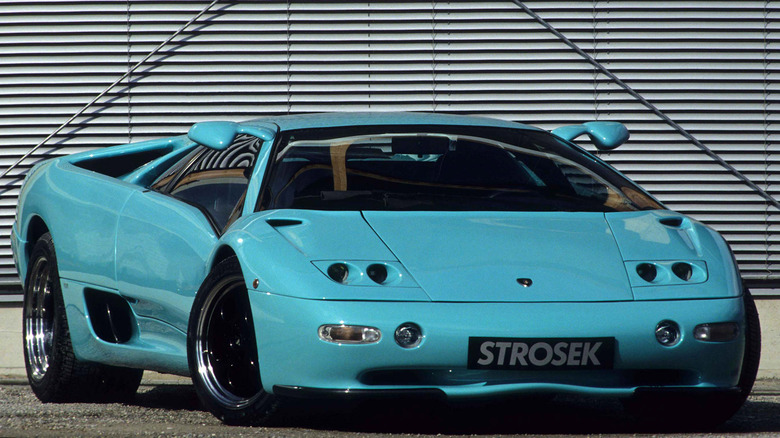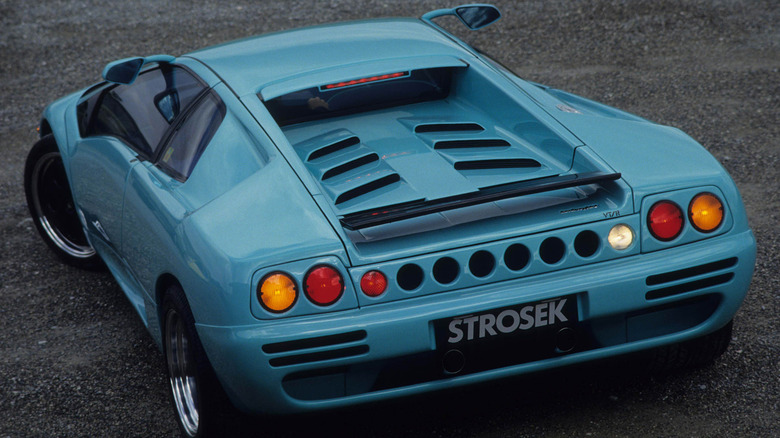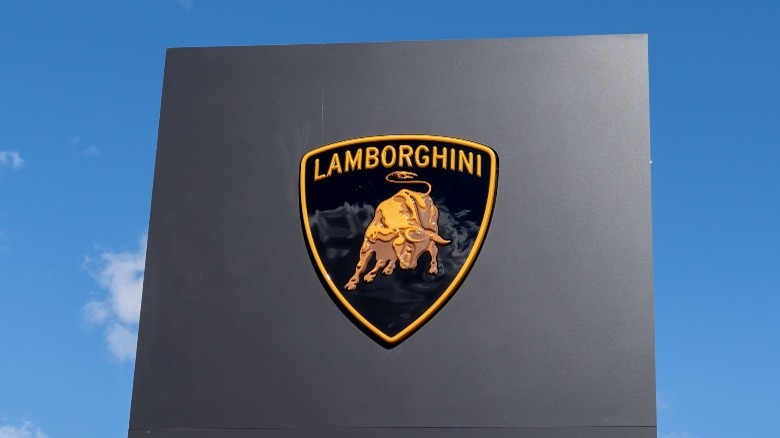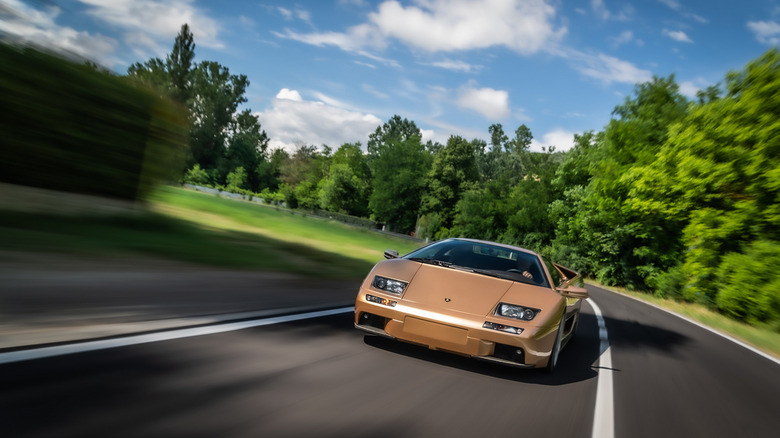The Real Reason America Banned The Lamborghini Diablo Strosek
Lamborghini is famous for making super speedy rides. But did you know that one of the vehicles in Lamborghini's portfolio that was banned in the US for being too fast and furious? The Lamborghini Diablo Strosek was one of the fastest cars at the time, coming packed with the ability to surpass the 200mph mark. Because of this vehicle's breaking of this 200mph barrier, it was considered too dangerous to be driven on public streets inside the United States.
The Lamborghini Diablo Strosek earns its name from Vittorio Strosek, a German automobile designer and tuner who is popular for modifying luxury cars. Strosek retrofitted the Lamborghini Diablo, an already blistering fast beast, with his custom kits, new wheels, a modified spoiler, and distinct mirrors. This modified design incited several concerns inside the USA, but before Strosek's modifications began to concern American authorities, the original Diablo was already on their restrictions radar.
The Lamborghini Diablo, named after a fierce fighting bull owned by the Duke of Veragua back in the 19th century, was born as a result of the Italian carmaker's ambitions to make a car that could fill in the very mighty shoes of the classic Countach. The goal was also to create a behemoth that could breach the 200mph mark.
Modifications that made Diablo Strosek unacceptable
In 1985, Lamborghini set out to achieve this feat with Project 132 which, after five years of development and an investment of six billion Italian liras (via Money Inc.), became the Lamborghini Diablo. Lamborghini produced only 2,884 units of the Diablo between 1990 and 2001. In 2001, the Diablo was replaced by Lamborghini Murciélago.
Despite being the fastest car at the time of its launch in 1990, the Lamborghini Diablo left much to be desired by luxury car connoisseurs in terms of its design. The mighty engine was underpinned with a rather usual-looking design that was typical of Lamborghini. To patch this, designer Strosek added their own modifications to the Diablo. Even though the Diablo was too fast to not be considered dangerous for roads in the US, some of Strosek's modifications made the car completely unacceptable for authorities.
Among the many changes, Strosek swapped out the front and the rear bumpers with rounder ones for a modern look. Lamborghini had already swapped out the pop-up headlights from the Countach with regular headlamps to reduce the thickness of the front bumper on the Diablo. Strosek removed these headlamps and replaced with much smaller dual headlamps for a more seamless and unobtrusive appearance.
Strosek also replaced the rear high-wing spoiler from the original Lamborghini Diablo with one that was combined with the trunk of the car. The new spoiler was also made adjustable so that it could be tuned as per the requirements for the drag force.
Mirrors that raised eyebrows
Another one of the more controversial upgrades to the Diablo made by Strosek was to the rearview mirrors. Strosek removed them from their traditional position of being placed along the lower edge of the windshield and put them high up on the top of the door. Additionally, the designer also replaced the original wheels on the Diablo with 18-inch magnesium wheels while also giving users the option to choose chrome wheels if they wished to.
Strosek left the interiors of the car pretty much unaltered. They would add new door panels and bucket seats only when demanded by a customer. The designer did not elaborate on changes made to the engine. Considering that the Diablo already had a powerful engine, many modifications to the engine were unnecessary.
Diablo can be unleashed in 2026
Besides the speed of the car, the new smaller headlights and the oddly placed mirrors were the reason behind the ban on the Lamborghini Diablo Strosek in the US. Even if Strosek managed to tune the engine to restrict the speed under 200mph, the ban wouldn't be revoked owing to the headlamps and the weird mirrors.
Fortunately, as Money Inc notes, the ban on cars can be removed if the car has not been in production for 25 years. The last of the Diablos came out in 2001 and that means it will once again be legal to own and drive it starting 2026. For anyone who has kept the Lamborghini Diablo tucked away in a garage, that may actually be great news as it is for gearheads who will be enthralled to witness the Diablo in car shows if not on the streets.



